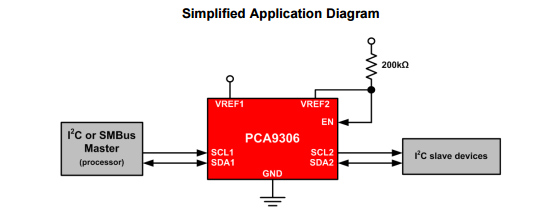Hi everybody,
I need to connect an I2C master device biased at 3.3 V to an I2C slave device that can be biased from 2.3 to 5.5 V.
1.- Is it any level translator that I can use? I only found level translators that require that one of the reference voltage is always bigger that the other.
2.- If there is no simple chip to do that, Is it possible to use some thing like this (VDD ranges from 2.3 to 5.5 V)?
Thank you in advance
Best regards GuiX





